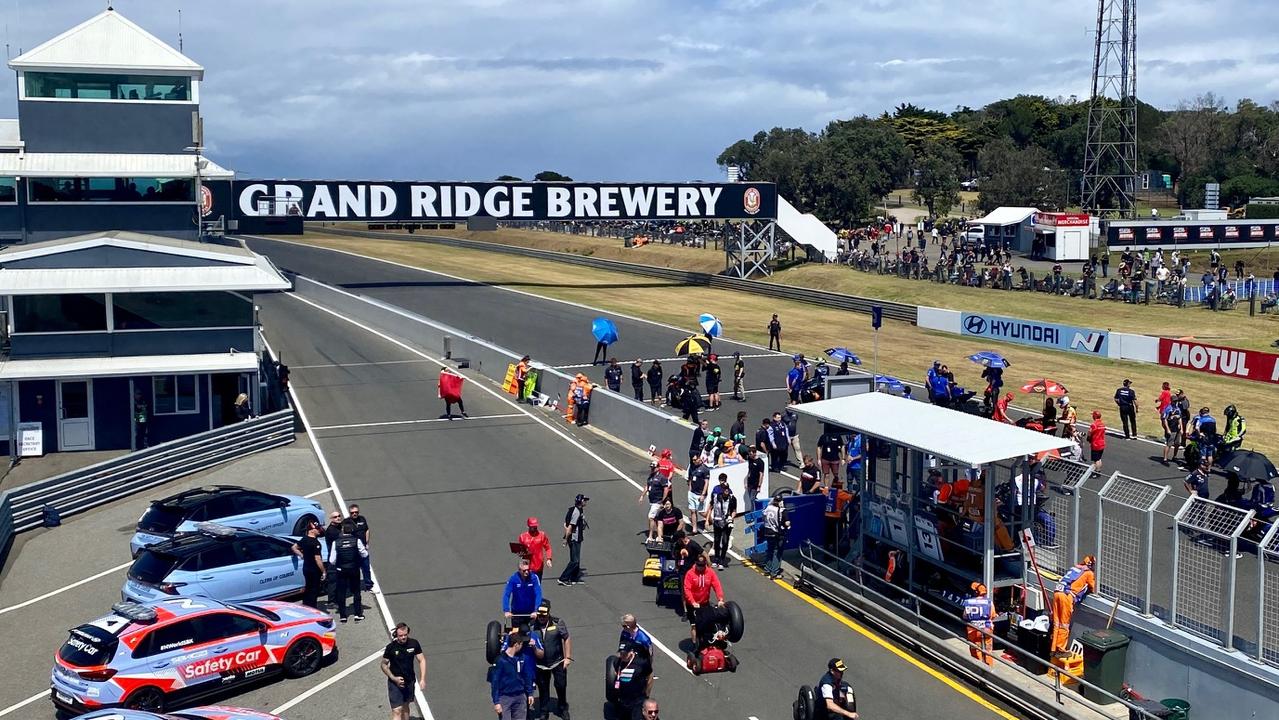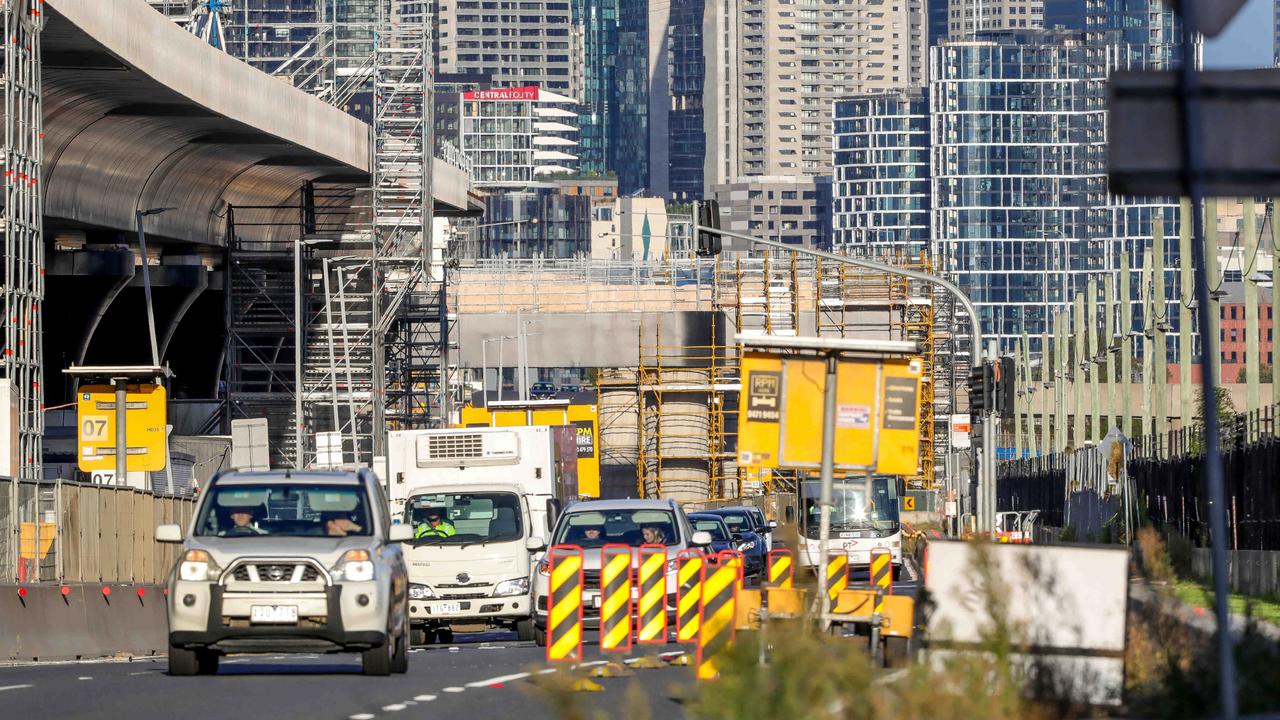Train crime crisis: Daytime station crime on the rise
PUBLIC transport users are demanding around-the-clock Protective Services Officer patrols after a rise in daytime crime at stations. HOW SAFE IS YOUR STATION? Find out here.

News
Don't miss out on the headlines from News . Followed categories will be added to My News.
PUBLIC transport users are demanding around-the-clock Protective Services Officer patrols after a rise in daytime crime.
More than 40 per cent of Victoria’s railway stations have more crime in the day than the night, a Sunday Herald Sun analysis using Crime Statistics Agency figures shows.
Frankston and Ringwood head the list of suburban stations with more problems in daylight hours.
Laverton station — where a 15-year-old boy was stabbed in the middle of the afternoon only last week — is among other hot spots.

Overall railway station crime increased 20 per cent in the past year.
Public Transport Users Association spokesman Daniel Bowen said PSO patrols, which begin at 6pm, should be extended to daytime hours.
“Some railway stations are known as crime hot spots, and they probably need PSOs, not just at night after 6pm but also during the daytime as well,” Mr Bowen said.
“There are some stations which are notorious for those sorts of offences occurring right through the day, not just in the evening.
“You’d hope the authorities are looking into it to identify what the patterns are and how to reduce it.”
The state government has announced a PSO “flying squad” to respond to incidents and deter crime day and night, but stopped short of promising permanent daytime patrols.
The analysis shows that 114 of Victoria’s 277 railway stations — 41 per cent — last year had more offences between 6am and 6.59pm than outside these times.
Almost 60 per cent of regional stations had more crime in the day.
Southern Cross station had the most day crime overall.
Frankston, Ringwood, Croydon, Pakenham, Parliament, South Morang, Eltham and Cranbourne were among other metropolitan daytime problem stations.
Ballarat, Tarneit, Bendigo, North Geelong, Traralgon, Lara and Castlemaine topped country stations attracting daylight crooks.
RMIT criminology professor Michael Benes said the huge volumes of passengers passing through stations in the day was a magnet for crooks.
“A genesis of crime is opportunity and a significant amount of human traffic that actually goes to railway stations happens during the day,’’ Prof Benes said.
“To decrease some of the offending — in a real sense — would be a visible presence of police officers at the railway stations.”
The Crime Statistics Agency figures showed there were a total of 7518 offences at railway stations last year, up from 6170 in the previous 12 months.
Crimes against the person — one of the most serious crime categories, which takes in assault and robbery — were most common during the day at many stations.
Wheelchair-bound Margaret Stevens is still traumatised after being assaulted at Ringwood station.
Ms Stevens said the attack occurred after she asked a cyclist to move her bike to allow her wheelchair to fit on the train, which made the cyclist verbally aggressive.
She said she tried to take a photograph of the bike to report it to staff, but it further agitated the cyclist, who then assaulted her.
“Since then, I’ve become extremely wary about going out on public transport on my own,” Ms Stevens said.
An extra 100 PSOs were hired last year but the state government was not considering permanent daytime PSO patrols.
But a strike squad will be formed to target crime hot spots during the day and night, and they will get new powers to work within public transport precincts rather than just at railway stations.
“PSOs are there when people need them and increase safety for passengers,’’ Police Minister Lisa Neville said.
“We’re delivering more PSOs, increasing their powers and expanding where they can go to better target crime hot spots across the public transport network.”
Victoria Police spokeswoman Hannah McDonald said PSOs had been deployed at 212 metropolitan and four regional railway stations, patrolling from 6pm to the last train during the week and all night on Fridays and Saturdays.
“Every person has the right to use the public transport system and feel safe,’’ Ms McDonald said.
“Victoria Police’s Transit Safety Division and local police work together and use intelligence-led policing to ensure their members are where they need to be, when they need to be, to address crime issues across the network.”
Metro spokeswoman Sammie Black said the train operator had 6000 CCTV cameras at stations and dedicated authorised officers and security staff keeping commuters safe.
All platforms and waiting rooms had lighting, and additional lights, cameras and emergency buttons were installed at designated safety zones.
wes.hosking@news.com.au
@weshosking

HOW SAFE IS YOUR STOP?
AROUND-the-clock Protective Services Officer patrols at problem train stations will halt surging crime on Melbourne’s rail network, public transport advocates say.
Almost 25 offences were recorded at metropolitan train stations and aboard trains each day last year, totalling more than 8560 offences including assaults, robberies and drug crimes.
It was up by more than 1200 offences from the previous year.
The State Government has announced a PSO “flying squad” to respond to incidents and deter crime day and night but stopped short of promising permanent daytime patrols.
Public Transport Users Association spokesman Daniel Bowen was shocked by the surge in rail crime.
“Some of the numbers have jumped because of the PSOs being on duty and more offences being detected. But all the PSOs have been deployed now, so it’s surprising to see it still rising,” Mr Bowen said.
“Some railway stations are known as crime hot spots, and they probably need PSOs, not just at night after 6pm but also during the day time as well.
“There are some stations which are notorious for those sorts of offences occurring right through the day, not just in the evening.
“You’d hope the authorities are looking into it to identify what the patterns are and how to reduce it.”
Almost 900 people reported being assaulted on trains and at train stations last year, 790 were assaulted in 2015, and 881 people reported assaults in 2014.
Wheelchair-bound Margaret Stevens is still traumatised after being assaulted at Ringwood station.
Ms Stevens said the attack occurred after she asked a cyclist to move her bike to allow her wheelchair to fit during the commute, which made the cyclist verbally aggressive.
She said she tried to take a photograph of the bike to report it to staff, but it agitated the cyclist further who then assaulted her.
“I was hanging on to my bag, and she was trying to pull it away from me, and in the end she managed to take my phone,” Ms Stevens said.
“She then threw the phone at me, and then she left.”
“Since then, I’ve become extremely wary about going out on public transport on my own.”
An extra 100 PSOs were last year hired with the same number to added in future.
The State Government is not considering permanent daytime PSO patrols.
But a strike squad will be formed to target crime hot spots at day and night and they will get new powers to work within public transport precincts rather than just at train stations.
“PSOs are there when people need them and increase safety for passengers,’’ Police Minister Lisa Neville said.
“We’re delivering more PSOs, increasing their powers and expanding where they can go to better target crime hot spots across the public transport network.”
Victoria Police spokeswoman Hannah McDonald said the spike in assaults on public transport reflected a wider increase.
Metro Trains spokeswoman Sammie Black said authorised officers, security and surveillance staff worked across the network to keep passengers safe.


